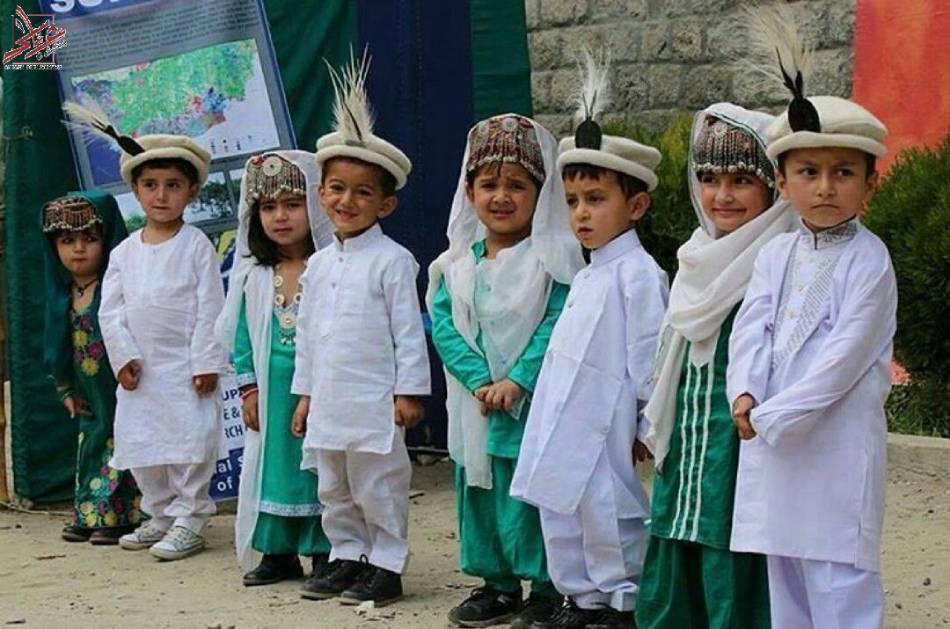
The Culture of Hunza – Introduction, Food and Dresses
Introduction:
Nestled in the breathtaking valleys of northern Pakistan, the region of Hunza captivates visitors with its mesmerizing landscapes, rich history, and vibrant cultural heritage. The Hunza people, known for their warm hospitality, have fostered a unique and enduring culture that has withstood the test of time. In this article, we delve into the fascinating aspects of the culture of Hunza, including their traditional dresses and delectable cuisine, offering readers a glimpse into this enchanting world.
1. Traditional Dresses of Hunza:

The traditional clothing of the Hunza people is a reflection of their heritage, values, and climate. The men typically wear a distinctive outfit consisting of a long-sleeved, loose-fitting shirt called a “Shalwar Kameez” paired with a waistcoat known as a “Vest.” They often complete their attire with a woolen cap called a “Tupi” or a turban adorned with a feather. This attire not only provides comfort but also showcases the artistic craftsmanship of the region.
Hunza women, on the other hand, wear vibrant and intricately embroidered dresses, which vary depending on the occasion. The traditional outfit consists of a long-sleeved shirt called a “Kho” and a flared skirt called a “Ghagra.” The dresses are adorned with colorful patterns, reflecting the region’s love for vibrant hues. Women also wear a Dupatta, a scarf-like accessory, which adds an elegant touch to their overall attire.
2. Culinary Delights of Hunza:
The cuisine of Hunza is as unique and diverse as its cultural tapestry. Influenced by its mountainous terrain, the traditional food of Hunza is both nourishing and flavorsome. The region is renowned for its organic produce, including fruits, nuts, and grains, which form the cornerstone of their cuisine. Let’s explore some of the signature dishes that define the gastronomic culture of Hunza:
- Hunza Bread: Made from freshly ground wheat and baked in a traditional clay oven, Hunza bread is a staple in the region. It is usually round in shape and has a slightly sweet taste, making it a delightful accompaniment to various meals.
- Chapshuro: This savory pastry is a local favorite in Hunza. It consists of a crispy, flaky dough filled with seasoned meat, onions, and a blend of aromatic spices. Chapshuro is typically enjoyed as a quick snack or as a main course.
- Harissa: Harissa is a traditional porridge-like dish made from pounded wheat and meat, usually chicken or lamb. Slow-cooked for several hours, it has a rich, hearty flavor and is often served during special occasions and festivals.
- Apricot-based Delicacies: Hunza’s fertile valleys are abundant with apricot orchards, and apricot-based dishes hold a special place in their cuisine. Locals and tourists alike enjoy popular treats such as apricot jam, dried apricots, and apricot-based desserts like halwa and tarts.
3. Cultural Significance and Heritage:
The culture of Hunza deeply roots itself in its historical significance and centuries-old traditions. The people of Hunza take pride in their folklore, music, and dance, which are integral parts of their cultural identity. Festivals such as the Harvest Festival (Baltit), celebrated in autumn, and the Polo Festival (Shandur), a thrilling equestrian event, showcase the vibrant spirit and unity of the Hunza community.
Moreover, the Hunza Valley is home to ancient architectural wonders such as the Altit Fort and Baltit Fort, which stand as testaments to the rich history and architectural brilliance of the region. These forts, with their intricate designs and strategic locations, offer a glimpse into the past and serve as reminders of the Hunza people’s resilience and heritage.
The Hunza culture also places great importance on hospitality. The locals welcome visitors to the region with open arms and treat them to warm hospitality, reflecting the values of community and togetherness. The locals take pride in sharing their traditions, stories, and folklore, making visitors feel like part of the Hunza family.
4. Preservation and Future Challenges:
While the culture of Hunza has stood the test of time, it faces certain challenges in the modern era. The influx of technology, globalization, and changing lifestyles bring both opportunities and risks to preserving the traditional practices and values of the Hunza people. The community is making efforts to strike a balance between preserving their cultural heritage and embracing the benefits of progress.
Local organizations, cultural centers, and educational institutions are working diligently to promote and safeguard the Hunza culture. Initiatives such as traditional dance and music workshops, handicraft exhibitions, and cultural festivals serve to create awareness and appreciation among both locals and tourists.
Conclusion:
The culture of Hunza is a treasure trove of history, traditions, and artistic expressions. From their traditional dresses, showcasing exquisite craftsmanship, to their delectable cuisine that reflects the region’s bounty, Hunza offers a captivating cultural experience. As the region navigates the challenges of the modern world, it is crucial to support and celebrate the preservation of its cultural heritage.
By embracing sustainable tourism, fostering community engagement, and promoting awareness, we can ensure that the unique traditions, values, and way of life of the Hunza people continue to thrive. Let us cherish and celebrate the enchanting culture of Hunza, and embrace the opportunity to immerse ourselves in its timeless beauty.


Comments (0)